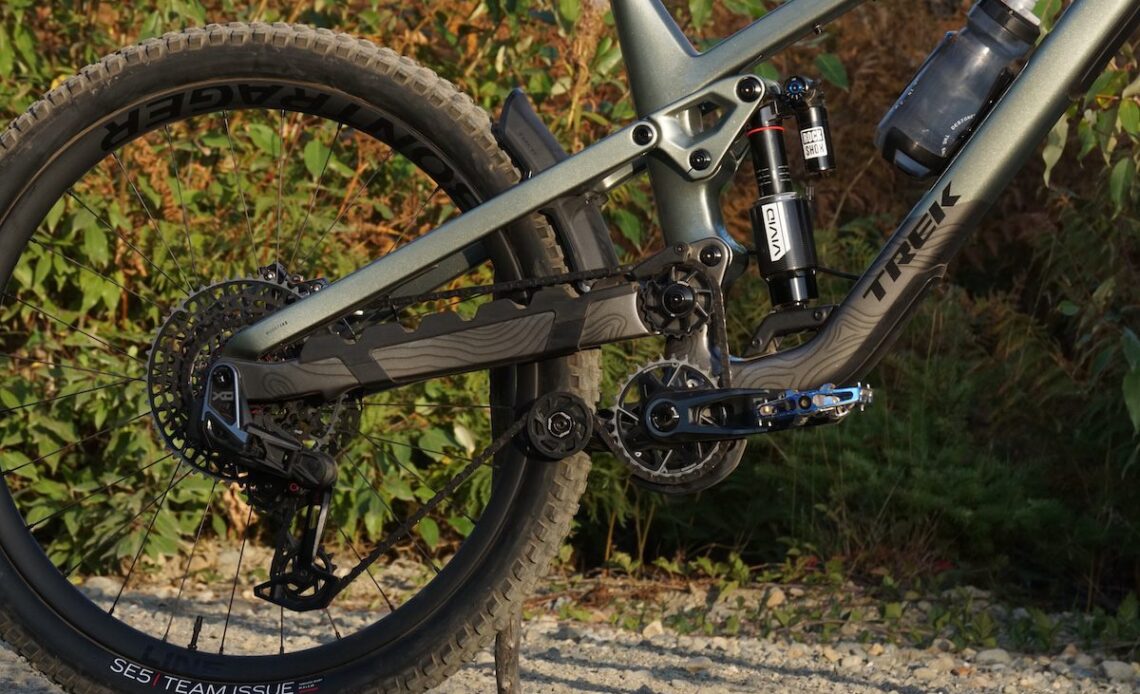Today Trek officially released the sixth generation in the Slash line, after months of teasing the new bike on the enduro race circuit. More than an update, this is a radical design overhaul of the Slash. Most obviously, the long-travel/enduro bike is now built around a high pivot suspension design.
The new Slash isn’t just hopping on the high pivot hype train, though. Trek says the Gen.6’s high pivot is designed as a trail (and park) bike first and a race bike second. As such, it comes stock with mixed wheels, 27.5″ rear and 29″ front. Anyone who wants more speed than fun does have the option to switch to matching 29″ wheels.
We’ve been spending time on the sixth-gen Slash for the last month or so and have been impressed with what Trek’s managed to pull out of the high pivot design. Read on for the details on the latest Slash and our first impressions from the trails.
Introducing: Trek Slash Gen. 6
What’s new with the Gen.6 Slash? Well, almost everything. The changes start from the new high-pivot suspension design on the carbon fibre frame and ripple outwards. A few new Trek standard tricks, like headset cups to adjust head angle and a shock progression chip, join the party, too.
High pivot Slash?
While high pivot bikes are much more common these days than they were a few years ago, they’re still a bit outside the norm. The basic idea is that the pivot location allows for a rearward axle path, making the suspension much smoother as the wheel moves with impacts instead of against them as it moves through the bike’s travel. To allow this to happen, an upper idler pulley is required to mitigate chain growth as the wheel moves further from the bottom bracket. This comes with a not-so-fringe benefit of separating suspension movement from pedaling forces giving the bike better traction while you’re laying down watts.
Why high pivot? The suspension platform is generally associated with race bikes and Trek goes out of its way to say the new Slash is not primarily a race bike (though its debut at the Enduro World Cup shows it can, in its 29″ configuration, go plenty fast). Trek is primarily after the aspects of HP designs that lend the bike much more control than simpler designs. The rearward axle path gives a smoother ride and, ideally, endless-feeling traction. If that level of control lets you go faster, too, well fast is also fun even if you’re not being timed.
Trek uses an oversized upper idler pulley to improve pedaling…
Click Here to Read the Full Original Article at Canadian Cycling Magazine…

